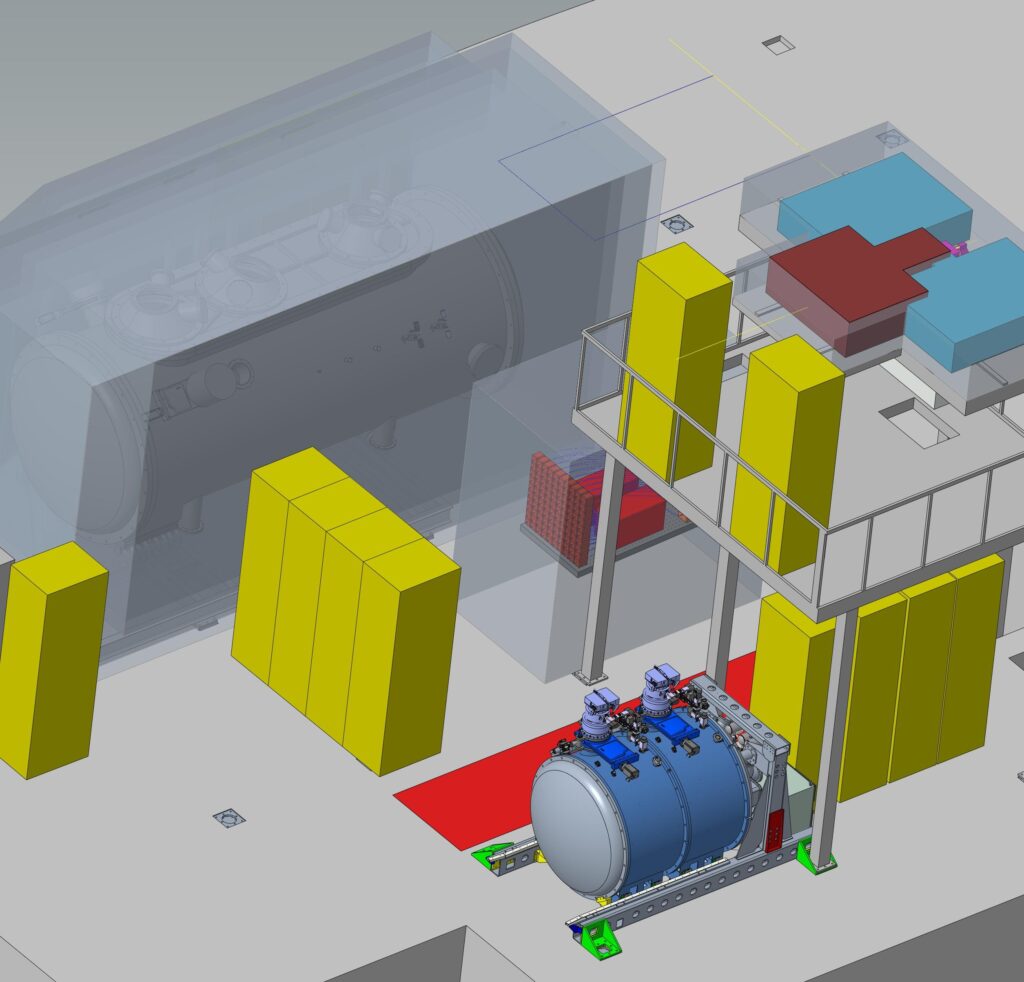K Spectrograph
The K-band spectrograph (KS) is one of the four ANDES spectrographs
covering the range of 1950 to 2450 nm.
The K-band spectrograph, together with the U-band channel, are only
goals. Their feasibility is studied further during Phase-B and depending
on the outcome they will be added to the baseline.
The reason to be goal is the lower transmission. The KS works in a
wavelength range where the silica fibers, which are used with all
other spectrographs, drop in transmission due to absorption in
fundamental vibrational modes of the fused silica molecules.
Therefore, another type of fibers, fluoride glass fibers, are needed
with the K-band. They have better transmission in the K-band, but
still not as good as silica fibers in the visible wavelengths. Keeping
the fibers short does increase the throughput drastically, which results
in the requirement of placing KS preferentially on the Nasmyth platform,
where mass and volume is limited.

The KS study was not replicating the other ANDES spectrographs but looking
into an alternative with a different approach, taking the given technical
limitations in volume and mass into account and delivering a solution
tailored to the major science cases in K-band: the transmission and reflected,
emitted light spectroscopy of exoplanets.

The KS design is more compact due to the fact that it only operates
diffraction limited. The design takes advantage of the performance of
the Adaptive Optics system, which is highest in longer wavelengths.
The observation are done in a hybrid mode using the seeing limited
arms with Adaptive Optics. 50% of the light up to 1 micron is used
for measuring the atmospheric wavefront aberrations. All the
wavelength range from 0.35 to 2.45 micron is observed in parallel.
The other spectrographs will observe with the large seeing limited fibers,
while KS will use one with a small core tailored to the diffraction
limited size of the point spread function. Up to six further fibers
could be accommodated to extend the field in the seeing limited arm
or to take light off the integral field unit.
